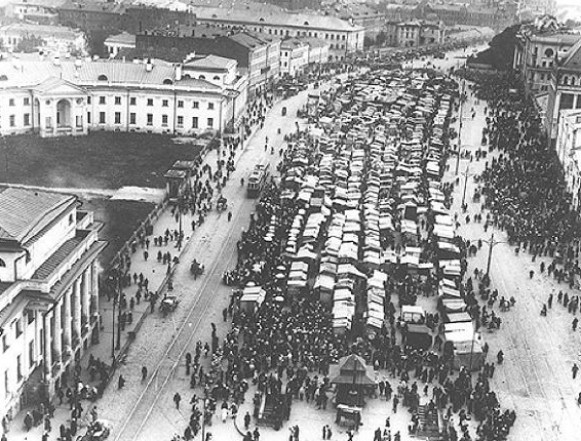Nepmen
Nepmen [непмани; nepmany]. Private entrepreneurs during the period of the New Economic Policy (NEP), introduced in 1921 in the USSR. The nepmen were not a large group in Soviet Ukraine. In late 1926, at the height of the NEP, they and their dependents constituted some 6 percent of the population. The largest contingent consisted of 325,000 self-employed persons in the cottage industry, construction industry, and transportation, and 99,000 self-employed in retail trade. A smaller number hired labor: 381 large and small factory owners (1,512 people if family members are included); 20,000 in the cottage industry, construction industry, and transportation; and 3,800 retailers. Nepmen who were employers represented 0.3 percent of the urban population. Farmers who hired labor were usually called kulaks; they constituted about 1 percent of the population. (Those who employed hired labor were officially classified as exploiters, whereas people working alone or with members of their families were also often considered nepmen.)
Almost immediately after the introduction of the New Economic Policy the Soviet government began a struggle against the ‘bourgeois’ nepmen, which intensified after Vladimir Lenin’s death, particularly under Joseph Stalin’s rule. The campaign classified them as social enemies, deprived them of the right to vote, and did not allow their children to enter institutions of higher education. Nepmen were also subjected to a higher tax rate (see Taxation), which was often entirely arbitrary and in excess of their income. Finally, they were the first victims in the campaign to expropriate gold and valuables that was carried out in the late 1920s and early 1930s. All persons suspected of holding gold or foreign currency were arrested for an indefinite period, subjected to cruel interrogation, and occasionally tortured until they agreed to turn over their valuables to the government for free.
After the industrialization policy was introduced, the tax rate imposed on nepmen grew rapidly, and they were effectively squeezed out of the economic life of the country, sometimes completely bankrupted, and exiled from the large cities as antisocial elements. Retailers and wholesalers of agricultural products were subjected to even greater persecution, and few of them escaped arrest and imprisonment. The only nepmen who survived industrialization were artisans (see Crafts), who were permitted to form artels and continue their work on a co-operative basis (see Co-operative movement).
BIBLIOGRAPHY
Ocherki razvitiia narodnogo khoziaistva Ukrainskoi SSR (Moscow 1954)
Morozov, Leonid. Reshaiushchii etap bor’by s nepmanskoi burzhuaziei (1926–1929) (Moscow 1960)
Novaia ekonomicheskaia politika: Voprosy teorii i istorii (Moscow 1974)
Ball, Alan Mills. Russia's Last Capitalists: The Nepmen, 1921–1929 (Berkeley, Los Angeles, and London 1987)
Alexander Babyonyshev
[This article originally appeared in the Encyclopedia of Ukraine, vol. 3 (1993).]
